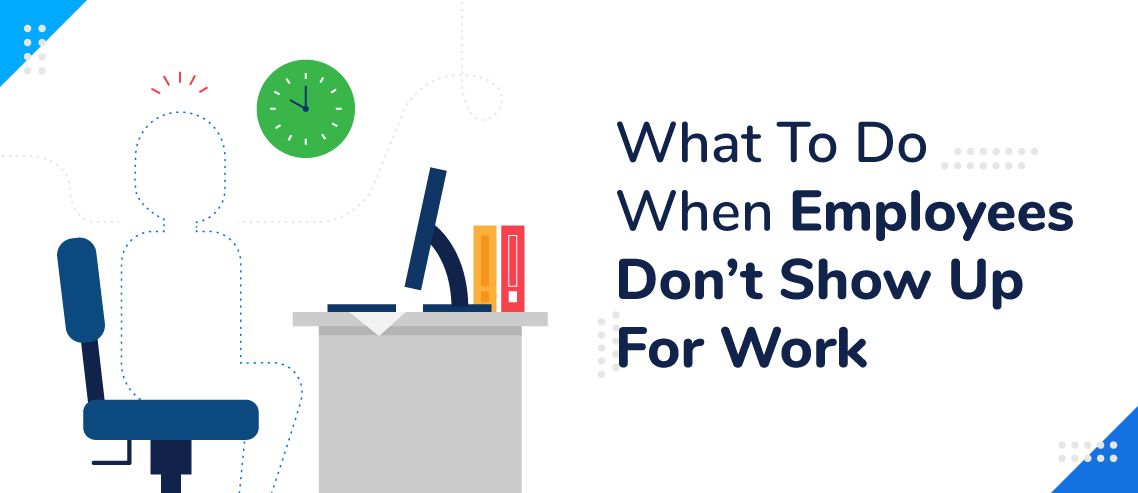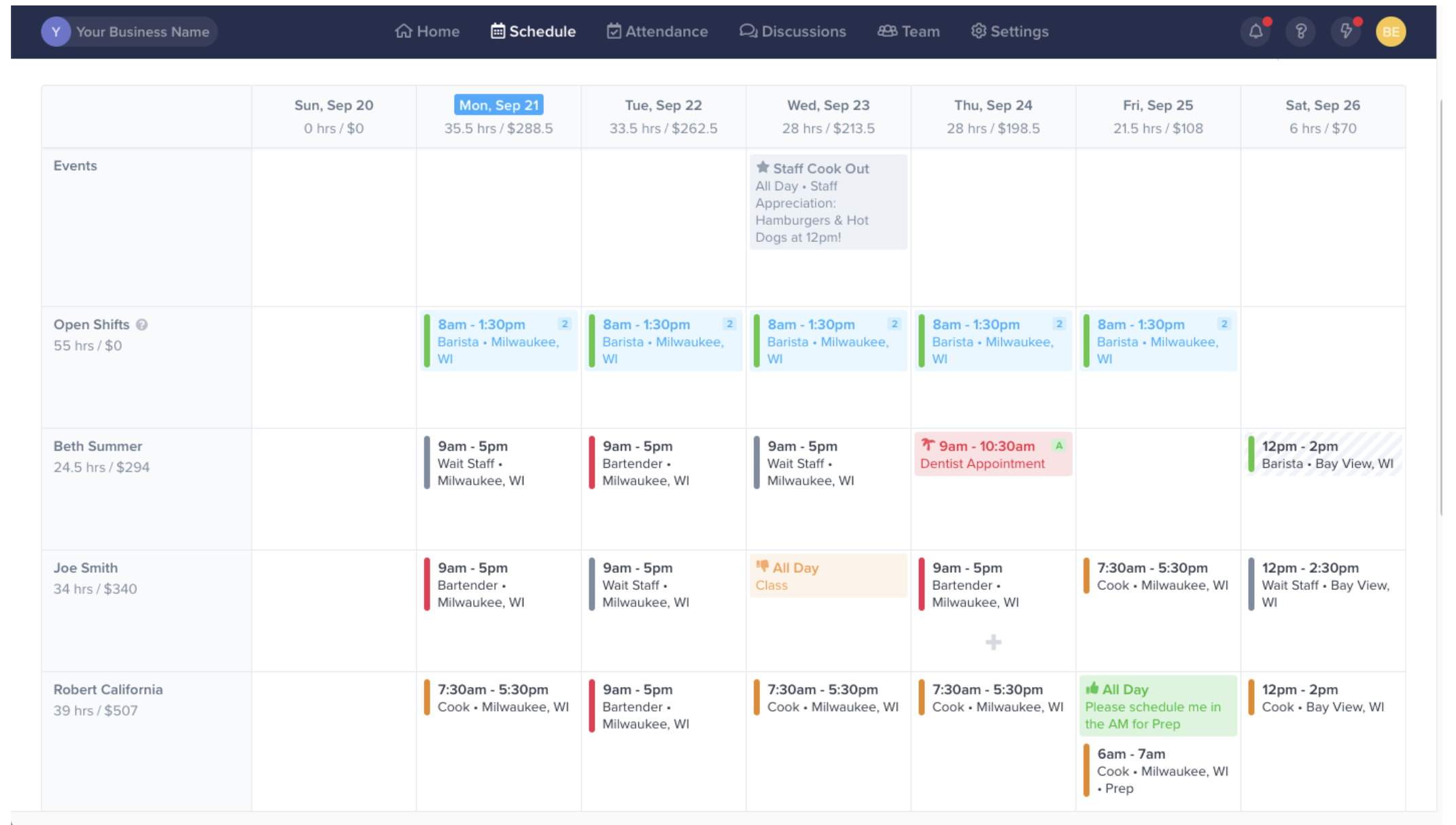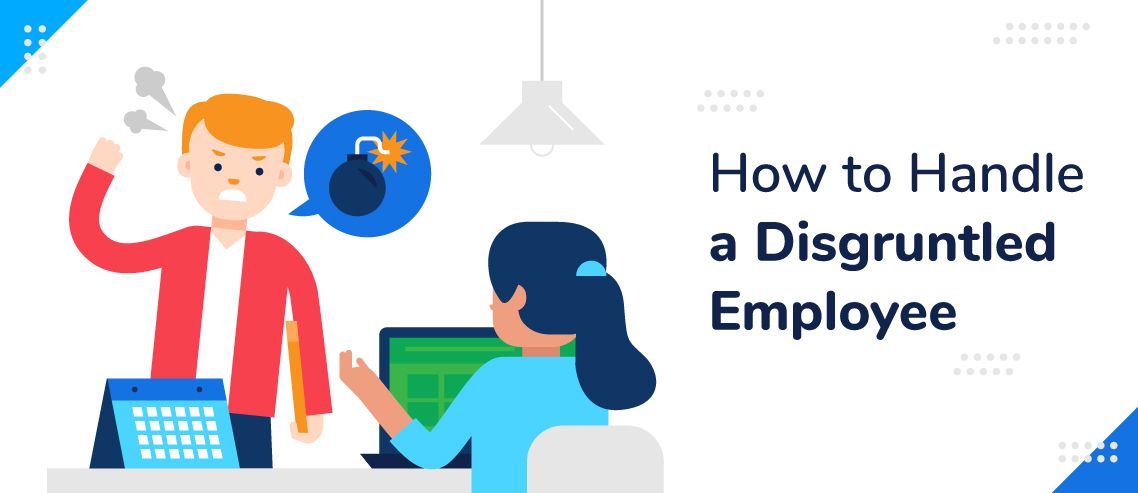No Show, No Call: What To Do When Employees Don’t Show Up For Work

You’re doing your best to manage your team.
But when you’re busy and have a lot on your plate, it’s easy for something to fall through the cracks.
Despite your best efforts, you may have employees that don’t show up to work – no call no show.
So, how do you deal with employees that are absent without notice? How should you respond to this situation as a leader?
Here are several tips on how to best deal with employees not showing up for work.
Treat Your Employees With Compassion
Your first instinct might be to reprimand the employee who didn’t show up to work.
But what if your team member couldn’t show up to work because of an emergency? What if a family member passed away, or they had to make a visit to the hospital?
You never know what may have happened to them.
First, it’s important to assess the situation. Talk to your employee and find out what happened. There may be a good reason why they couldn’t make it into work. Of course, it could also be that they just slept in or forgot their shift.
But before you walk into the situation with guns blazing, remember to be human. Surely, you’ve also overslept once or twice in your life.
We’re not saying you shouldn’t be strong in how you handle the situation.

But first and foremost, relate to them on a human level.
Communicate Clearly
It’s easy to make a lot of assumptions about people. But don’t let your personal biases overrule the facts.
In the heat of the moment, it’s easy to hear what you want to hear instead of listening attentively and carefully to your team member’s explanation.
For better or for worse, we tend to categorize people and craft a persona around what we know about them. But your assumptions aren’t infallible, so don’t let your imagination get carried away with possible explanations.
Remember – communication in the workplace is a two-way street. Both sides must listen, and both sides must speak. Get to the bottom of the situation, because the first thing that pops to mind isn’t always the real issue.
Understand the Problem
Understanding the problem goes hand in hand with communicating clearly.
Though facing a challenge head- on can sometimes be scary, when you understand the problem, you can deal with it more strategically. When you haven’t completely clarified what the problem is, it’s harder to come up with a tailored solution.
Keep in mind that the obstacle you’re facing may be more widespread than you know. It could be that you’re just beginning to see it play out in your business.
For instance, if one employee feels like they were wronged somehow, and they spread the message among their coworkers, employee morale could begin to decline.
This would be an issue on the group level as opposed to the individual level.

Once you’ve identified what the core issue is, you’ll be better prepared to deal with it.
Engage Your Employees
If you feel the need to put new policies in place to handle no shows, it’s a good sign your employees are disengaged from their work.
Your employees need connection. They need to be praised, rewarded, and incentivized. They need to feel like they are being heard. They require clear targets and goals to hit, so they know what your expectations for them are.
There are many ways to engage your employees.
Failing to do so will result in reduced productivity, and higher churn. With the cost of hiring and onboarding being as high as it is, wouldn’t you prefer to keep the team members you’ve worked so hard to find and train?

Adjust Your Scheduling Process To Prevent This From Happening Again
Are you encountering challenges with regards to scheduling? Many managers do.
Manually keeping track of shifts can be time- consuming and error-prone, whether it’s with a calendar or spreadsheet.
There are better solutions available, and they will help you reduce errors and help your team members stay on track without your constant involvement. You can’t send reminders to every employee every time it’s time for them to work, but ZoomShift’s employee scheduling software can.
Maybe the no call, no show happened because the employee genuinely didn’t know they were supposed to be at work. This could indicate a problem with how you share and communicate the schedule. Does your process keep employees accountable?
If you don’t already have tools that can help you prevent no call no shows, it’s time to research your options.

Final Thoughts
Even if you do everything right, you may have employees that don’t make it in to work.
When hiring, ensure that the people you’re onboarding resonate with your corporate culture and are reliable workers. This can help you eliminate absenteeism.
Do you wish scheduling your employees would be easier than it is? Do you need a better way to manage and organize their schedule?
Sign up for a free trial of ZoomShift today.
JD enjoys teaching people how to use ZoomShift to save time spent on scheduling. He’s curious, likes learning new things everyday and playing the guitar (although it’s a work in progress).



